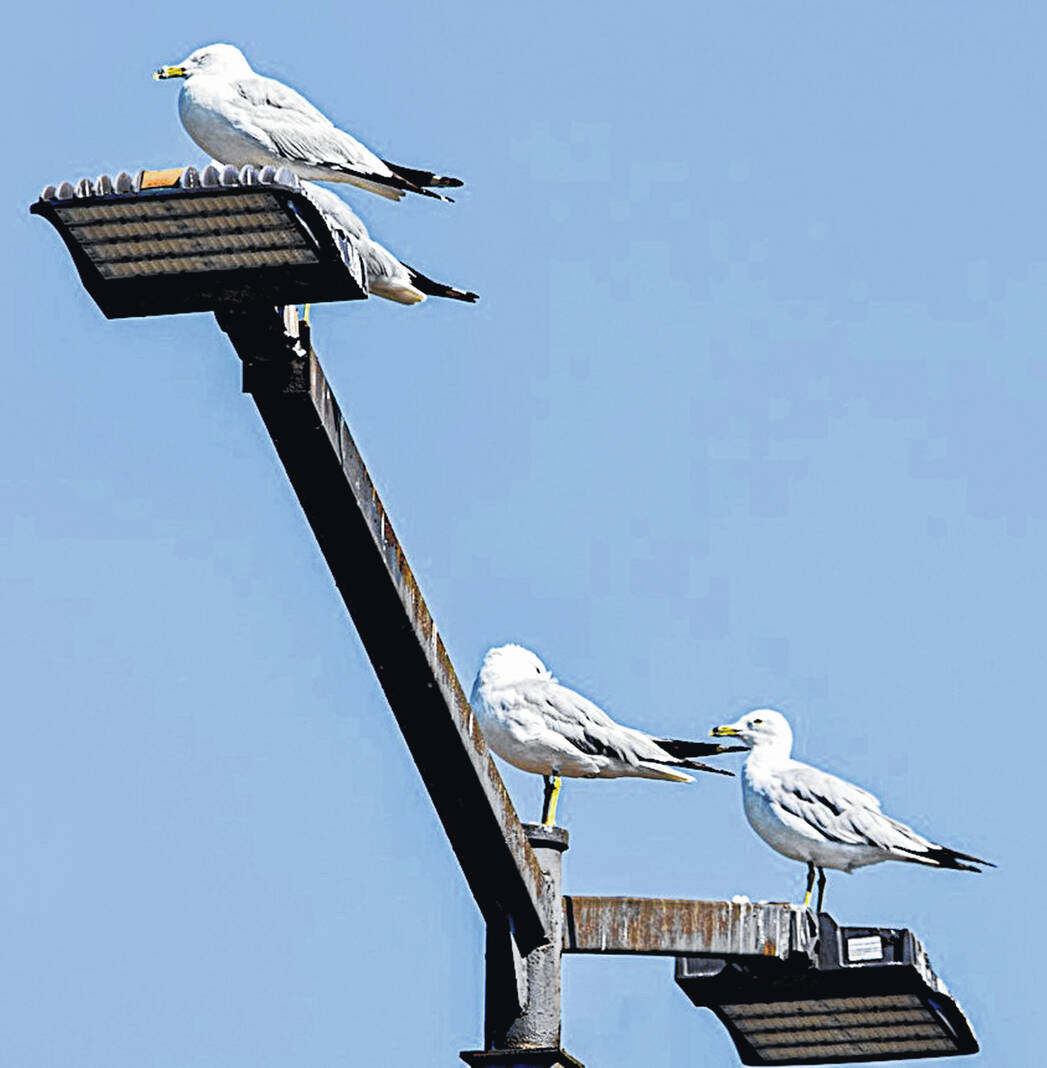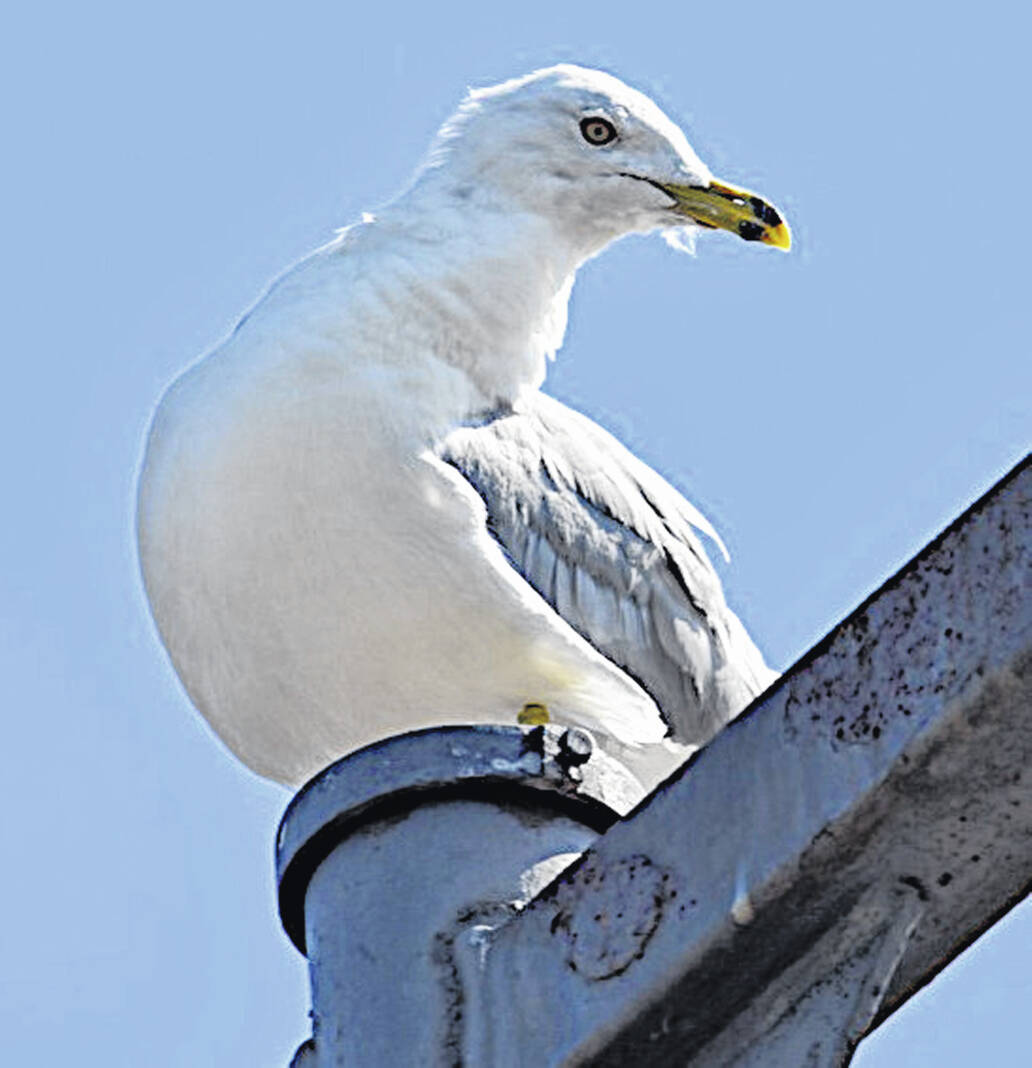

You may find yourself in a supermarket parking lot in Hillsboro. Cars are driving in and out, the familiar sounds of sputtering engines, shopping carts banging into their designated corral and the sporadically cacophonous sound of nearby traffic fill the air. Then, out of nowhere, you may hear a sound more associated with coastal climes and holidays on the beach. You look around to see from where the sound is emanating and it’s a flock of chattering, noisy seagulls.
You may ask yourself, why are there seagulls in Ohio?
Perched atop the lamp posts that illuminate consumer retail spaces, these very verbal visitors have become a familiar presence all over the state, but according to the Columbus Audubon Society, the seemingly incongruous phenomenon of inland seagulls is a bit misleading. They are not seagulls, per se, just gulls, of which there is more than one variety, that ornithologists and educated amateur bird-watchers can discern among by being aware of special patterns and markings that differentiate between the various varieties present in Ohio.
Types of Gulls
Gull identification is a confusing imbroglio for avid avian activists, according to The Columbus Audubon Society, which laments the confusion encountered by “birders” seeking to know more about this species. It acknowledges that, “The entire family is just a major pain-in-the-bleeper” to properly I.D. because so much “variation exists amongst even one species and there are hybrids galore.” Trying to discern one from the other can be, “nothing short of disastrous and ego-busting to some.”
The proliferation of gulls in Ohio makes things even more difficult, the society said.
“Their sheer numbers when they congregate on locations,” can be confusing, according to the society, when it comes to the complicated process of gull taxonomy in Ohio.
“Aside from the negative, gull identification is also very fun, tricky fun, and you can always, always learn something,” the society said. “Certain plumages of gulls are astoundingly beautiful, and there is so much to appreciate in the soft shades, tones, pure whites, deep grays and blacks, of these amazingly diverse birds.”
What does the gull say?
According to avian experts, the sounds that gulls make have distinctive meanings, interpretations and connotations.
Ornithological researchers have identified at least seven different types of gull calls, and their inferred associated meanings, including one that scientists named “Bald Eagle Disturbance” that is exclusively used when certain subtypes of gulls are in the presence of bald eagles, their biggest nemesis and predator.
According to the Ohio Department of Natural Resources, “The bald eagle occurs in marshes, swamps and river systems throughout Ohio.” The country’s national symbol, the bald eagle was once notably on the Endangered Species List, but is still being monitored. According to the ODNR, “Bald Eagles have continued to recover from a low of four breeding pairs in 1979.”
Their population in Ohio now encompasses a “documented 707 nests throughout the state of Ohio,” according to a recent statewide nest census.
Like the bald eagle, Ohio gulls have recovered from historically being near extinction. Their once declining numbers was attributed to their use in millinery, such as the fancy plumed hats favored by fashionable denizens of the late 19th century. As a result of their inclusion in the making of increasingly extravagant ladies’ hats, the gulls’ existence was once threatened.
Pretty feathers, plumage and even entire wings or birds, at the time, adorned millinery to such an extent that gulls were in danger of becoming extinct. But wildlife legislation in the interim has allowed the gulls to successfully rebound and thrive.
Why are they here
and what do they want
The gulls are adaptable by nature and the edible detritus created by human consumer activity accounts for their presence in, and adaptation to, more metropolitan spaces, according to Ohio author and journalist Robert Loewendick, who has studied the species and other state wildlife extensively, and has documented their tendencies and activities.
The human reaction to the seemingly salient sight of birds that seem somehow out of place is something he’s noticed, too.
“The gulls of Ohio are an interesting sight, especially displayed against the drab colors of winter,” he said.
Amidst a background of stark commercial landscapes, Ohio gulls, feasting on the scraps of commerce, bring the soothing seaside sounds of the beach and make us stop for a second to think, “Why are there seagulls in this parking lot in Ohio?”
The proliferation of gulls around human activity is easy explainable, according to Loewendick, who said the species has become less timid around humans in their ongoing, scavenging quest for food. The gull’s normal diet would include fish, small salamanders, rodent animals, insects, and even a small bird if the opportunity presents itself, according to Loewendick. But the intrusion of humans has resulted in adaptation and a change in diet.
“Human sprawl has invaded to the edges of ponds, lakes and rivers,” Loewendick said, and that has changed their behavior.
“As with most wildlife species, members of the gull family have adapted to the change in habitat,” Loewendick said. Nevertheless, he cautioned that humans should not attempt to befriend or directly feed them.
“Please don’t offer a full anything to eat as human handouts create health issues for the birds,” Loewendick said.
Juliane Cartaino is a stringer for The Times-Gazette.



